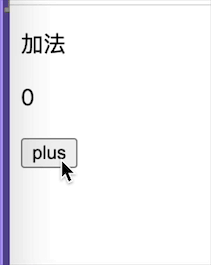项目地址:https://github.com/Nealyang/R...
本想等项目做完再连载一波系列博客,随着开发的进行,也是的确遇到了不少坑,请教了不少人。遂想,何不一边记录踩坑,一边分享收获呢。分享当然是好的,
如果能做到集思广益,那岂不是更美。我们的口号是:坚决不会烂尾
本博客为连载代码博客同步更新博客,随着项目往后开发可能会遇到前面写的不合适的地方会再回头修改。如有不妥~欢迎兄弟们不啬赐教。谢谢!
session
后端部分
上一篇文章中,我们已经实现了前后端的登录功能。问题大家可能都已经发现了,当刷新页面的时候,之前登录过的现在得重新登录。显然,这个并不是我们想想要的。
所以这里我们采用session的机制来解决这类问题。不了session和coolie可以参考我这篇博客。
apiServer.js
app.use(cookieParser('express_react_cookie'));
app.use(session({
secret:'express_react_cookie',resave: true,saveUninitialized:true,cookie: {maxAge: 60 * 1000 * 30}//过期时间
}));
因为是登录信息,所以这里我们采用的是session。首先需要在apiServer.js中引入cookie-parser和express-session中间件。
coolieParser里面设置一个key,必须要和session中一致。然后设置coolie的过期时间。这里我们设置为30min。
然后再用户登录成功了以后,我们需要设置session
router.post('/login',(req,res) => {
let {username,password} = req.body;
if (!username) {
responseClient(res,400,2,'用户名不可为空');
return;
}
if (!password) {
responseClient(res,'密码不可为空');
return;
}
User.findOne({
username,password: md5(password + MD5_SUFFIX)
}).then(userInfo => {
if (userInfo) {
//登录成功
let data = {};
data.username = userInfo.username;
data.userType = userInfo.type;
data.userId = userInfo._id;
//登录成功后设置session
req.session.userInfo = data;
responseClient(res,200,'登录成功',data);
return;
}
responseClient(res,1,'用户名密码错误');
}).catch(err => {
responseClient(res);
})
});
其中,req.session.userInfo = data即为设置session的userInfo。
然后再server端需要另写一个接口。在用户打开网站的时候就发起请求,验证用户是否已经登录。
//用户验证
router.get('/userInfo',function (req,res) {
if(req.session.userInfo){
responseClient(res,'',req.session.userInfo)
}else{
responseClient(res,'请重新登录',req.session.userInfo)
}
});
很简单,就是将请求中的req.session.userInfo的信息返回过去。这样,当用户访问网站的时候,先发送这个请求,来判断用户知否已经登陆过。如果已经登陆过,拿到这个userInfo直接put一个action到reducer中,修改state状态树即可。
前端部分
前端部分比较常规。在最外层的container中,直接发送请求即可
class AppIndex extends Component {
constructor(props) {
super(props);
this.openNotification = this.openNotification.bind(this);
this.shouldComponentUpdate = PureRenderMixiin.shouldComponentUpdate.bind(this);
}
openNotification(type,message) {
let that = this;
notification[type]({
message: message,onClose: () => {
that.props.clear_msg();
}
});
that.props.clear_msg();
};
render() {
let {isFetching} = this.props;
return (
<Router>
<div>
<Switch>
<Route path='/404' component={NotFound}/>
<Route path='/admin' component={Admin}/>
<Route component={Front}/>
</Switch>
{isFetching && <Loading/>}
{this.props.notification && this.props.notification.content ?
(this.props.notification.type === 1 ?
this.openNotification('success',this.props.notification.content) :
this.openNotification('error',this.props.notification.content)) :
null}
</div>
</Router>
)
}
componentDidMount() {
this.props.user_auth();
}
}
然后对应saga的处理也比较常规,这里不再赘述。
权限认证
因为是博客系统,所以所谓的权限就是判断改登录用户是否为管理员。我们在设计user表的时候,添加了身份一项。当然,咱可以随意用别的字符来标识管理员和普通用户。
render() {
const {url} = this.props.match;
if(this.props.userInfo.userType){
return (
<div>
{
this.props.userInfo.userType === 'admin' ?
<div className={style.container}>
<div className={style.menuContainer}>
<AdminMenu history={this.props.history}
url={this.props.adminUrl}
changeUrl={this.props.change_location_admin}/>
</div>
<div className={style.contentContainer}>
<Switch>
<Route exact path={url} component={AdminIndex}/>
<Route path={`${url}/managerUser`} component={AdminManagerUser}/>
<Route path={`${url}/managerTags`} component={AdminManagerTags}/>
<Route path={`${url}/newArticle`} component={AdminNewArticle}/>
<Route path={`${url}/detail`} component={Detail}/>
<Route component={NotFound}/>
</Switch>
</div>
</div> :
<Redirect to='/'/>
}
</div>
)
}else{
return <NotFound/>
}
}
在admin.js中,我们判断state中是否有userInfo这个选项。
如果userInfo是有值的,那么说明已经登录。如果没有值,则跳转到NotFound页面。
为什么先显示notFound界面,而不是在userInfo为空的时候直接Redirect?
这里有个大坑,具体看我segmentFault上的提问:react redux身份验证,取state的问题
以上即为admin的权限认证,如上,当admin登录到管理后天的时候,既可以到管理界面,当不是admin登录到管理后台的时候,会直接Redirect到博客首页。
总结
如上,我们就直线了用户的免登陆以及权限管理的问题。主要就是通过session和状态树的判断。
下一篇,我们就开始后端部分的开发~
## 项目实现步骤系列博客
- 实战react技术栈+express前后端博客项目(0)-- 预热一波
- 实战react技术栈+express前后端博客项目(1)-- 整体项目结构搭建、state状态树设计
- 实战react技术栈+express前后端博客项目(2)-- 前端react-xxx、路由配置
- 实战react技术栈+express前后端博客项目(3)-- 后端路由、代理以及静态资源托管等其他配置说明
- 实战react技术栈+express前后端博客项目(4)-- 博客首页代码编写以及redux-saga组织
- 实战react技术栈+express前后端博客项目(5)-- 前后端实现登录功能
- 实战react技术栈+express前后端博客项目(6)-- 使用session实现免登陆+管理后台权限验证
- 实战react技术栈+express前后端博客项目(7)-- 前端管理界面用户查看功能+后端对应接口开发
- 实战react技术栈+express前后端博客项目(8)-- 前端管理界面标签管理功能+后端对应接口开发
- 实战react技术栈+express前后端博客项目(9)-- 前端管理界面评论管理功能+后端对应接口开发
- 实战react技术栈+express前后端博客项目(10)-- 前端管理界面发表文章功能
- 实战react技术栈+express前后端博客项目(11)-- 后端接口对应文章部分的增删改查
- 实战react技术栈+express前后端博客项目(12)-- 前端对于发文部分的完善(增删改查、分页等)
- 实战react技术栈+express前后端博客项目(13)-- 前端对于发文部分的完善(增删改查等)
- 实战react技术栈+express前后端博客项目(14)-- 内容详情页以及阅读数的展示
- 实战react技术栈+express前后端博客项目(15)-- 博客添加评论功能以及对应后端实现
- 实战react技术栈+express前后端博客项目(16)-- pm2 的使用说明
- 实战react技术栈+express前后端博客项目(17)-- 收工
## 交流
倘若有哪里说的不是很明白,或者有什么需要与我交流,欢迎各位提issue。或者加群联系我~
扫码关注我的个人微信公众号,直接回复,必有回应。分享更多原创文章。点击交流学习加我微信、qq群。一起学习,一起进步
---
欢迎兄弟们加入:
Node.js技术交流群:209530601
React技术栈:398240621
前端技术杂谈:604953717 (新建)
---




